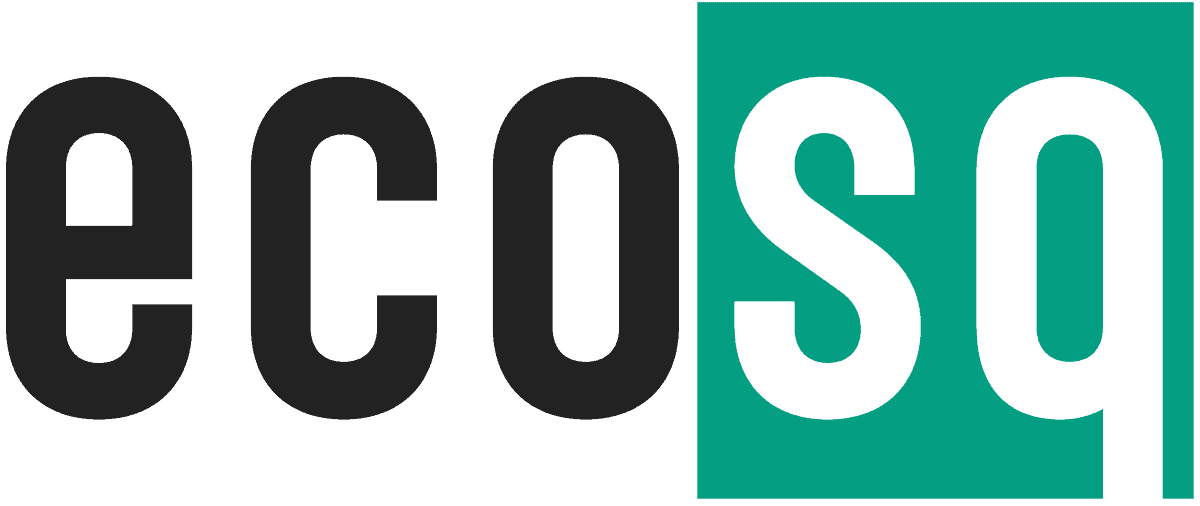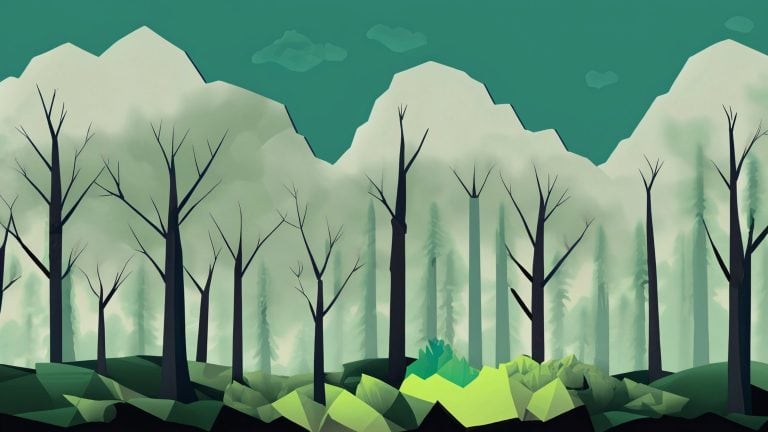Empowering Sustainable Futures Through Environmental Education with Open Source Software
This article was previously published in our newsletter. The content may no longer be up to date.
In a world facing mounting environmental pressures, education is one of our most powerful tools for change. Teaching people of all ages about issues like climate change, biodiversity loss, and pollution is key to solving these crises. This is where open source software comes in. By harnessing the potential of open source platforms and tools, environmental education can reach wider audiences, spark collaboration, and engage learners – ultimately empowering more people to create sustainable futures.
In this comprehensive guide, we’ll explore how open source software can transform environmental education through increased accessibility, customization, and interactivity. We’ll look at key open source learning tools, real-world applications, tips for getting started, and exciting future possibilities. By the end, you’ll understand how open source can make environmental education more impactful.
The Critical Need for Environmental Education
Before delving into the role of open source software, let’s look at why environmental education is so important in the first place.
Our planet is facing unprecedented environmental threats. Just look at a few statistics:
- Climate Change: Average global temperatures have risen 1.1°C since pre-industrial times and are on track to rise 1.5°C between 2030 and 2052 if current trends continue (NASA).
- Habitat Loss: Over 85% of wetlands have been lost worldwide over the last 300 years (Ramsar Convention on Wetlands).
- Pollution: 91% of people worldwide breathe polluted air that exceeds WHO air quality limits (WHO).
These issues endanger ecosystems, economies, and human health and wellbeing. Tackling them requires sweeping changes to how we live, work, produce, and consume. Education is the key to inspiring and achieving these transformations. As UNESCO declares, “Education is humanity’s best hope and most effective means in the quest to achieve sustainable development” (UNESCO).
Environmental education teaches people of all ages about ecological and sustainability issues. It provides:
- Knowledge about environmental science, impacts, and solutions.
- Skills for analyzing issues, solving problems, and changing behaviors.
- Values like responsibility, empathy, and commitment to nature.
- Capabilities to take informed action as environmentally aware citizens.
Both formal and informal education programs play important roles in building this knowledge, skills, values and capabilities.
Well-designed environmental education helps people deeply understand environmental phenomena, envision more sustainable futures, and take steps towards those visions. It fosters interdisciplinary, critical thinking. It connects global issues to learners’ local contexts. It motivates changing attitudes and behaviors.
For all these reasons, high-quality environmental education is essential for creating an environmentally literate populace that can address sustainability challenges. This is where open source software comes into play.
The Promise of Open Source Software in Education
Open source software provides the foundation for making environmental education more dynamic, collaborative, and far-reaching. But what exactly is open source software?
Open source software has source code that anyone can inspect, modify, and enhance. It often emerges from decentralized teams collaborating over the internet. Open source products are generally free to use and redistribute. This model promotes transparency, rapid innovation, and universal access.
These principles perfectly align with the goals of education. It’s no wonder open source software is revolutionizing education in all disciplines. Some key advantages of open source in education include:
- Accessibility: Open source makes learning resources available to all, regardless of geography or socioeconomic status.
- Adaptability: Educators can customize open source materials to suit diverse teaching and learning needs.
- Cost savings: Schools and educators can save on expensive proprietary software and textbooks.
- Community: Open source facilitates knowledge sharing between users and developers worldwide.
These features make open source software a promising avenue for increasing the impact of environmental education.
Open Source Learning Tools for Environmental Education
A vibrant ecosystem of open source learning tools exists to meet a wide range of educational needs. Here we explore some of the most popular and empowering tools for environmental education.
Learning Management Systems (LMS)
A learning management system (LMS) provides the infrastructure to deliver learning experiences online. Popular open source options include:
- Moodle – A customizable LMS to create full online courses and modules, integrating multimedia, quizzes, forums, and more.
- Canvas – A cloud-based LMS focused on simplicity and usability. Includes assessments, analytics, and integrations.
- ILIAS – LMS with extensive features focused on collaboration and communication between users.
Environmental educators can leverage these platforms as foundations for interactive online learning.
Content Repositories
Open repositories offer shareable educational content. Useful examples are:
- CK-12 – Extensive library of customizable textbooks, lessons, simulations, and videos across science subjects.
- PhET Interactive Simulations – Engaging, research-based science and math simulations from the University of Colorado Boulder.
Educators can easily integrate content from these repositories into their curricula.
Reference Materials
Learners can expand their knowledge using open reference materials like:
- Wikipedia – The free encyclopedia has expansive environmental science content.
- Khan Academy – Nonprofit offering free courses on environmental topics like ecology and climate change.
- OpenStax – Library of free, peer-reviewed textbooks covering environmental science.
Learning Communities
Open source facilitates collaborative learning through communities like:
- GLOBE – Worldwide community of students and scientists collaborating on environmental research projects.
- Scratch – Creative learning community where learners can program and share interactive stories, games, and animations.
These kinds of open communities allow learners to connect and educate each other about the environment.
This list just scratches the surface of open source learning tools available. With a bit of digging, you can find open source solutions for all your environmental education needs, whether it’s creating full courses, finding activity ideas, or engaging in communities.
Real-World Applications of Open Source Environmental Education
Open source environmental learning initiatives are already making waves worldwide. Here are a few stellar examples:
UNESCO Green Citizens
UNESCO’s Green Citizens program provides open curriculum resources to educate children and youth about sustainable development. Materials include interactive games teaching about ecosystems, biodiversity, and more. They aim to build sustainability capabilities and empower youth to drive change.
doiSTEM Open Water Studies
The doiSTEM project offers open source curriculum modules exploring issues like water quality, conservation, and management. Learners collect and analyze water data while building environmental awareness and problem-solving skills.
Marine Debris Curriculum
This open curriculum from the US National Oceanic and Atmospheric Administration (NOAA) contains detailed lessons and activities about marine pollution for grades K-12. It equips students to understand and tackle this issue.
Expeditionary Learning Schools
The Expeditionary Learning network supports over 150 schools in designing in-depth learning expeditions driven by open educational resources. Students deeply explore environments, conduct fieldwork, and take action on sustainability issues.
These are just a few examples of open source environmental education initiatives making a real-world difference. Educators worldwide are sharing ideas, resources, and programs to spread critical environmental knowledge and catalyze change.
Key Benefits of Open Source Environmental Education
We’ve explored some excellent open source tools and initiatives, but what are the overarching benefits driving their impact?
Increased Accessibility
Open access promotes educational equity worldwide. Learners everywhere can access quality learning materials, overcoming barriers like geography, finances, and special needs. Open source makes environmental education truly accessible to all.
Customizability
Educators can easily customize open source materials to suit diverse audiences and needs. This flexibility ensures environmental education remains locally relevant and engaging.
Cost Savings
Schools and educators can provide great learning experiences at low cost, reducing financial barriers to environmental education access.
Collaboration
The open source model facilitates collaboration between users and developers worldwide. This collective wisdom and effort drives innovation and continuous improvement of educational resources.
Community Building
Open platforms allow users to interact, share knowledge, and educate each other, fostering communities of practice around environmental topics.
By embracing these strengths, open source environmental education can reach learners from all walks of life and equip them to address sustainability challenges.
Getting Started with Open Source Environmental Education
Eager to get started but not sure where to begin? Here are some tips:
Find Great Open Source Materials
- Search repositories like CK-12, PhET, and OpenStax for relevant lessons, simulations, and textbooks.
- Look at curricula from initiatives like Green Citizens and NOAA.
- Check out the Open Education Consortium’s catalog of open environmental courses.
Set Up an Open Source LMS
- Choose a platform like Moodle, Canvas or ILIAS.
- Follow installation and setup instructions.
- Customize the LMS with colors, banners, menus etc.
- Add users and enroll them in courses.
- Integrate external content from repositories.
Join Online Communities
- Find forums to exchange ideas and resources. e.g. Open Education Forum
- Join networks like Green Teacher to share experiences.
- Contribute your knowledge on open platforms like Wikipedia and Khan Academy.
Make Your Original Materials Open
- License your lessons, activities, media etc. under a Creative Commons license.
- Share them on sites like Tes or through open content repositories.
- Inspire others by sharing your open source environmental education story online.
The open source model thrives on collaboration. So tap into communities, share ideas and experiences with fellow educators, and help build momentum.
Future Possibilities for Open Source Environmental Education
Open source environmental education is only gaining steam. Several promising frontiers could accelerate its educational impact even further.
Virtual and Augmented Reality
Immersive technologies like VR and AR are set to transform learning. These digital layers over the physical world can transport students anywhere – shrink them down to cellular levels, immerse them in threatened ecosystems, or show them futuristic green cities. Imagine what environmental insights those vivid experiences could spark!
Artificial Intelligence Applications
AI could allow highly customized and adaptive learning. Learners receive tailored environmental lessons responding to their progress, needs and interests in real time. AI tutors provide guidance and feedback. Automated assessment analyzes written work and projects. These applications could make learning more personalized and effective.
Expanded Global Collaboration
We need to massively scale up environmental education worldwide. Open source enables connecting more teachers, students, organizations and policy makers in collaborative networks that cross geographic and cultural boundaries. These connections can accelerate knowledge sharing and educational innovation.
Next-Gen Open Source Projects
We’ll continue to see inspiring open source environmental education projects emerge. For instance, initiatives to map and monitor biodiversity using crowdsourced citizen science data. Or games that immerse learners in complex climate solutions. The possibilities to blend open source tech and environmental education are endless.
These advances could vastly increase the reach, interactivity, and impact of open source environmental learning worldwide.
Key Takeaways on Open Source Environmental Education
Let’s recap the key takeaways from this guide:
- Environmental education is critical for empowering people to address today’s sustainability crises and create more sustainable futures. Open source provides a powerful platform for increasing its impact.
- Open source learning tools like LMS platforms, content repositories, and communities make environmental education more dynamic, sharable, and collaborative.
- Real-world open source initiatives are expanding access to quality environmental education worldwide.
- Key benefits of open source environmental education include increased accessibility, customizability, cost savings, and community sharing.
- Educators can easily get started by finding and adapting open materials, setting up open source systems, and engaging in communities.
- Exciting frontiers like VR/AR, AI, and global networking can future-proof open source environmental education.
- By harnessing the collaborative power of open source, we can empower many more people with the knowledge and drive to create a sustainable future.
So in a nutshell, open source software has immense potential to make environmental education more empowering, engaging, and effective worldwide. Let’s leverage its collaborative power to build a healthier planet and more sustainable future together!






